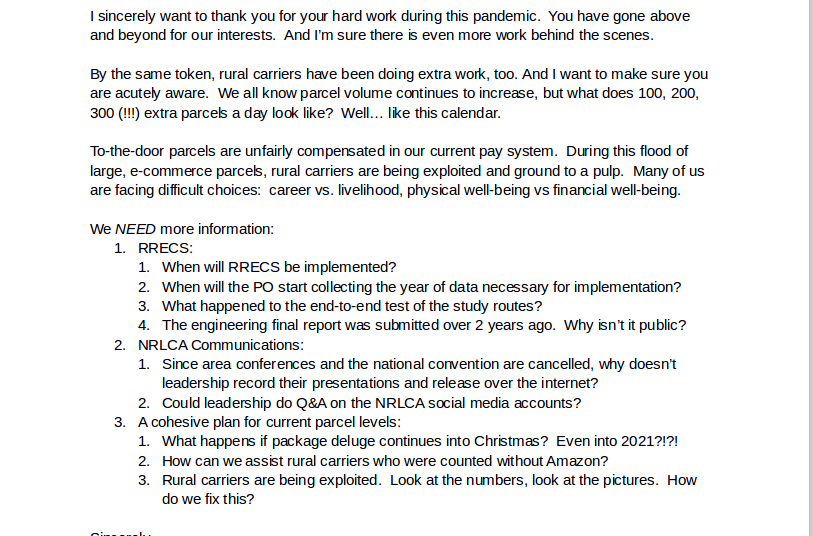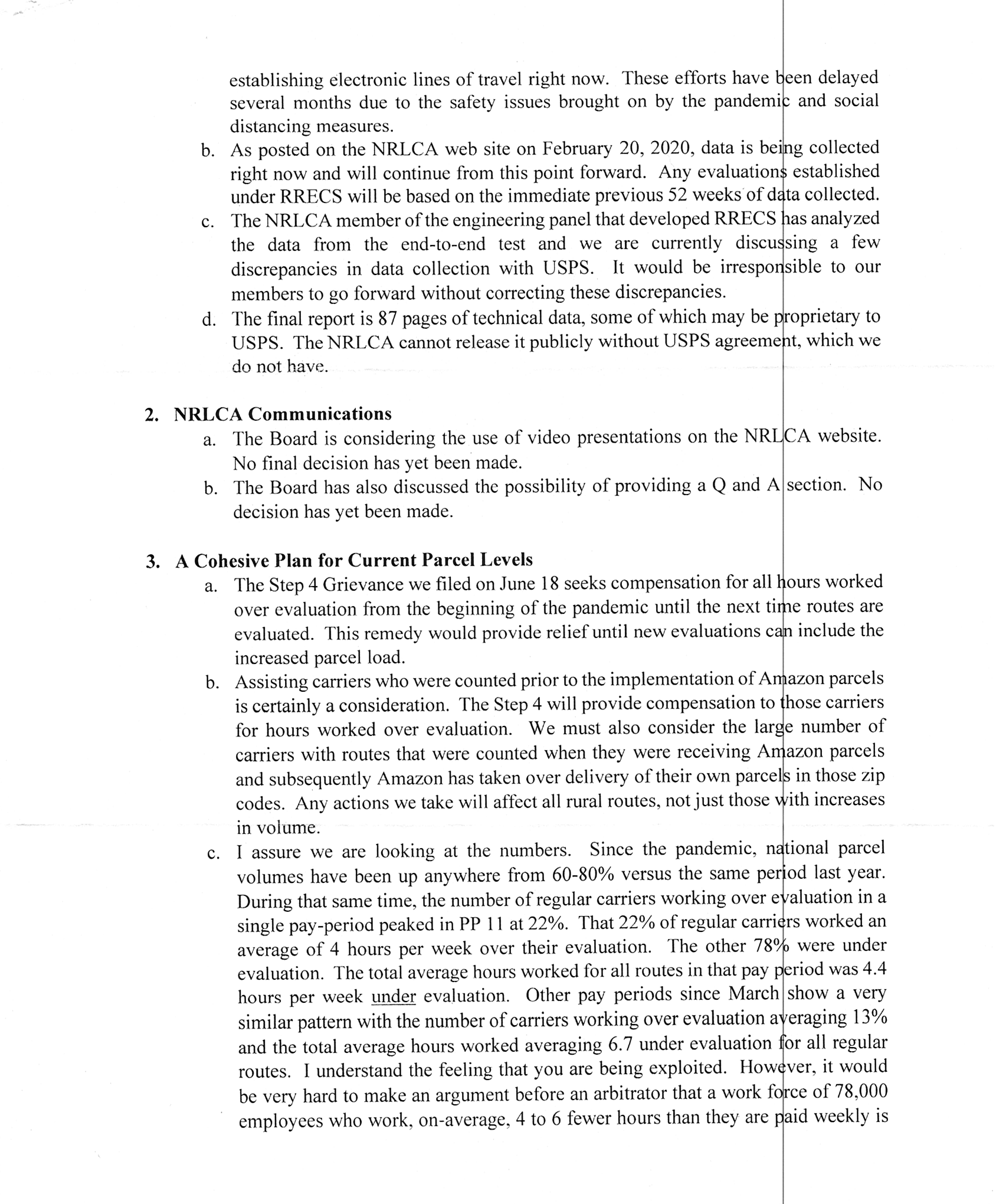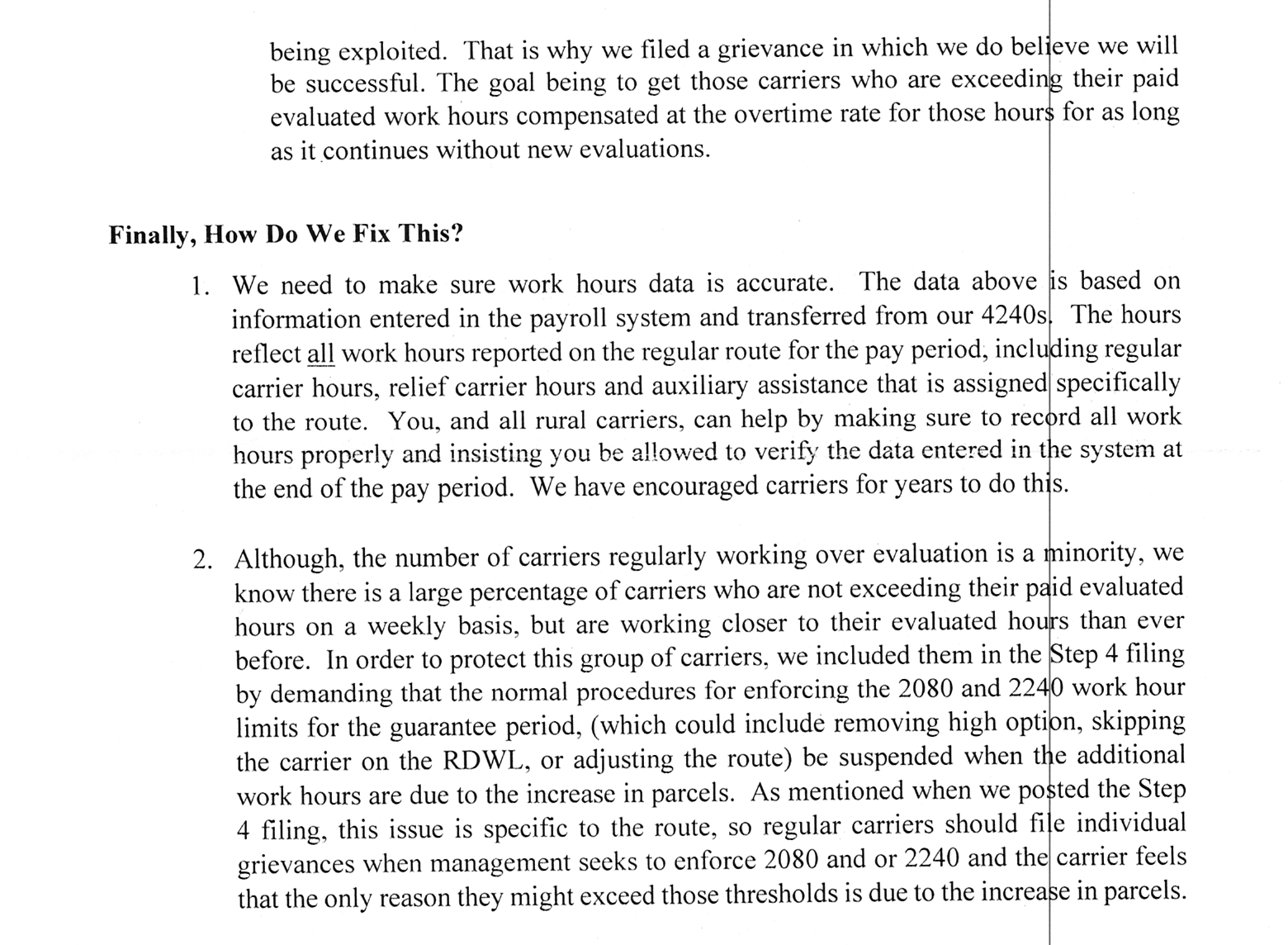Topic underlined
My Questions in bold
The Union Response not bold
RRECS
1) When Will RRECS be implemented?
a) RRECS will be implemented as soon as all of the routes can be mapped to our satisfaction and the data collection is validated. As we have explained on the NRLCA website, pilot testing is being conducted on mapping of the routes and establishing electronic lines of travel right now. These efforts have been delayed several months due to the safety issues brought on by the pandemic and social distancing measures.
2) When Will PO start collecting the year of data necessary to implement RRECS?
b) As Posted on NRLCA 20 Feb 2020, data is being collected right now and will continue from this point forward. Any evaluations established under RRECS will be based on the immediate previous 52 weeks of data collected.
3) What happened to the end-to-end test of the study routes?
c) The NRLCA member of the engineering panel that developed RRECS has analyzed the data from the end-to-end test and we are currently discussing a few discrepancies in data collection with USPS. It would be irresponsible to our members to go forward without correcting this discrepancies.
4) The engineering final report was submitted over 2 years ago. why isn’t it public?
d) The final report is 87 pages of technical data, some of which may be proprietary to USPS. The NRLCA cannot release it publicly w/o USPS agreement, which we do not have.
NRLCA Communications
1) Since area conferences and national convention are cancelled, why doesn’t leadership record their presentations and release over the inernet?
a) The Board is considering the use of video presentations on the NRLCA website. No final decision has yet been made.
2) Could leadership do Q&A on the NRLCA social media accounts?
b) The Board has also discussed the possibility of providing a Q and A section. No decision has yet been made.
A cohesive plan for current parcel levels
1) What happens if package deluge continues into Christmas? Even into 2021?!?!
a. The Step 4 Grievance we filed on June 18 seeks compensation for all hours worked over evaluation from the beginning of the pandemic until the next time routes are evaluated. This remedy would provide relief until new evaluations can include increased parcel load.
2) How can we assist rural carriers who were counted without Amazon?
b. Assisting carriers who were counted prior to the implementation of Amazon parcels is certainly a consideration. The Step 4 will provide compensation to those carriers for hours worked over evaluation. We must also consider the large number of carriers with routes that were counted when they were receiving Amazon parcels and subsequently amazon has taken over delivery of their own parcels in those zip codes. any actions we take will affect all rural routes, not just those with increases in volume.
3) Rural carriers are being exploited…
c. I assure you [sic] we are looking at the numbers. Since the pandemic, national parcel volumes have been up anywhere from 60-80% versus the same period last year. During that same time, the number of regular carriers working over evaluation in a single pay-period peaked in PP11 at 22%. That 22% of regular carriers worked an average of 4 hours per week over their evaluation. The other 78% were under evaluation. The total average hours worked for all routes in that pay period was 4.4 hours per week under evaluation. Other pay periods since March show a very similar pattern with the number of carriers working over evaluation averaging 13% and the total average hours worked averaging 6.7 under evaluation for all regular routes. I understand the feeling that you are being exploited. However it would be very hard to make an argument before an arbitrator that a work force of 78,000 employees who work, on-average, 4 to 6 fewer hours than they are paid weekly is being exploited. That is why we filed a grievance in which we do believe we will be successful. The goal being to get those carriers who are exceeding their paid evaluated work hours compensated at the overtime rate for those hours for as long as it continues without new evaluations.
4) How do we fix this?
1. We need to make sure work hours data is accurate. The data above is based on information entered in the payroll system and transferred from our 4240s. The hours reflect all work hours reported on the regular route for the pay period, including regular carrier hours, relief carrier hours, and auxiliary assistance that is assigned specifically to the route. You, and all rural carriers, can help by making sure to record all work hours properly and insisting you be allowed to verify the data entered into the system at the end of the pay period. We have encouraged carriers for years to do this.
2. Although, the number of carriers regularly working over evaluation is a minority, we know there is a large percentage of carriers who are not exceeding their paid evaluated hours on a weekly basis, but are working closer to their evaluated hours than ever before. In order to protect this group of carriers, we included them in the Step 4 filing by demanding that the normal procedures for enforcing the 2080 and 2240 work hour limits for the guarantee period, (which could include removing high option, skipping the carrier on the RDWL, or adjusting the route) be suspended when the additional work hours are due to the increase in parcels. As mentioned when we posted the Step 4 filing, this issue is specific to the route, so regular carriers should file individual grievances when management seeks to enforce 2080 or 2240 and the carrier feels that the only reason they might exceed thresholds is due to the increase in parcels.
That’s all I have for you right now. Holler if you see any typos, that was a fair chunk of typing.
Have a great evening, and thanks to everyone who contributed to the calendar!




